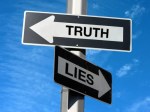 Back in April I drew your attention to a marvelous review by Janet Malcolm of the non-fiction work of Joseph Mitchell. In the course of the review Malcolm makes the startling revelation that his non-fiction is substantially enhanced by the (recently discovered) fictional additions.
Back in April I drew your attention to a marvelous review by Janet Malcolm of the non-fiction work of Joseph Mitchell. In the course of the review Malcolm makes the startling revelation that his non-fiction is substantially enhanced by the (recently discovered) fictional additions.
Mitchell’s travels across the line that separates fiction and nonfiction are his singular feat. His impatience with the annoying, boring bits of actuality, his slashings through the underbrush of unreadable facticity, give his pieces their electric force, are why they’re so much more exciting to read than the work of other nonfiction writers of ambition.
Malcolm’s point also caught the attention of Catherine K Buni, a writer whose articles and essays have been published or anthologized by The Atlantic online, The New York Times, The Rumpus, Soul of the Sky, and The Writer, among others. Buni’s fascinating essay, ‘Pants on Fire: The Genre That Cannot Be Named‘, has been published on The Millions.
Given everything we know, why do nonfiction writers continue to make stuff up and not tell readers? Given everything we know, why do readers continue to feel betrayed and outraged when nonfiction writers do this?
The essay is worth reading for itself, but it also contains links to a wide range of fascinating books: some that illustrate her point, others that illuminate it. I’m a sucker for books about writing and Buni’s list includes:
- Blurring the Boundaries: Explorations on the Fringes of Nonfiction, Naomi Kimbell
- You Can’t Make This Stuff Up: The Complete Guide to Writing Creative Nonfiction, Lee Gutkind
- A Field Guide for Immersion Writing, Robin Hemley
- Tiger Writing: Art, Culture, and the Interdependent Self, Gish Jen
- The Lifespan of a Fact, Jim Fingal & John D’Agata
Right, well, that’s my birthday request list right there….
I hope your birthday is soon and that you have lots of friends and family to satisfy your wish list!
I’m interested in this topic too, but I haven’t heard of ANY of those books. So much writing out there!
Birthday not so soon – may be forced to buy myself some ‘presents’. Dear Michelle, these are for you, best wishes Michelle. Ha! I’d only heard of the one by Gutkind. It’s wonderful there are so many books out there I’ve yet to discover. And sometimes a bit dispiriting too.
Yes, that’s the paradox of being a keen reader isn’t it. Stop publishing won’t you! But then, wah, where are the new books? I guess we’re lucky to have such simple problems.
Indeed, an interesting question – why do non-fiction writers make stuff up and not declare it? I dare say it makes more interesting reading. But do they really think their readers won’t notice?
It’s about trust, isn’t it. As readers we take an awful lot on trust. And I suspect that, mostly, we don’t actually notice when they make stuff up. Which perhaps makes us feel all the more cross (and foolish) when we find out. But I find the territory just on either side of the true/ false line endlessly fascinating.